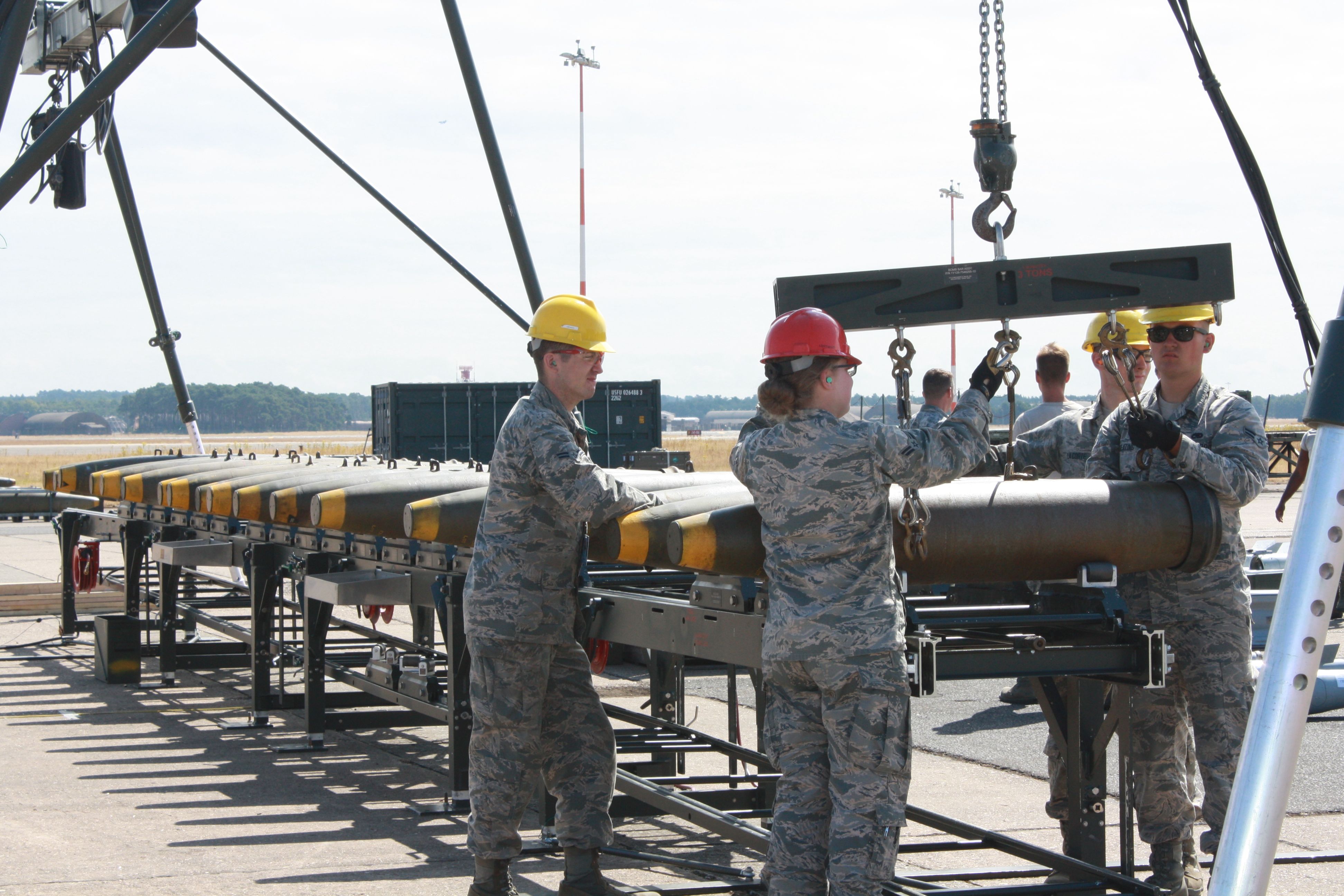
Airmen participated in the first Combat Ammunition Production Exercise July 16-19 at RAF Lakenheath, England. Staff photo by Amy McCullough.
RAF LAKENHEATH, England—Munitions airmen across US Air Forces in Europe wrapped up the first Combat Ammunition Production Exercise in theater here on Thursday, where they got hands-on experience with a variety of live munitions.
During the four-day exercise—also known as CAPEX—Total Force airmen from Lakenheath; Aviano AB, Italy; Spangdahlem AB, Germany; Ramstein AB, Germany; RAF Alconbury, England; Beale AFB, Calif.; and Little Rock AFB, Ark., built, transported, and tore down between 800 and 1,000 live munitions, including joint air-to-surface standoff missiles, air-to-air missiles, joint direct attack munitions, laser-guided bombs, and small diameter bombs.
The exercise, which was funded primarily through the European Deterrence Initiative, was a significant departure from day-to-day operations in which mostly inert munitions are used. Although not intentionally planned this way, it also coincided with F-15 surge operations at the base, more closely simulating real-world combat operations. As teams built the weapons and loaded them onto vehicles to transport to quality check, F-15E Strike Eagles consistently roared overhead.
“Most people train like they fight. If you’re on the flightline, you launch and recover jets, whether it’s training or war. In munitions, it’s way different muscle movements and muscle memory you need from routine support to full combat operations,” Maj. Dan Connors, commander of the 48th Munitions Squadron, told Air Force Magazine during an exercise tour.
Before CAPEX, basically the only chance Lakenheath airmen got to work with live munitions was when they deployed (or were preparing to deploy), or when they attended training at the Air Force Combat Ammunitions Center at Beale.
“At the strategic level in USAFE, they saw a need for us to show our capabilities in this part of the world because of how they are posturing,” said SMSgt. Dan Cain, production flight chief with the 48th Munitions Squadron and lead planner of the exercise. Cain said the exercise not only tested airmen’s technical ability to build bombs, it also helped identify areas where the squadron needs more support and/or resources from higher headquarters.
The command hopes to regularly host CAPEX at rotating bases in Europe, much the way Pacific Air Forces does, said Cain.
“We have a youth movement in the Air Force, as we’re growing,” said Connors. “With that, … training experience is the challenge of the day. There is no better way to get a massive amount of training than the baptism they get through CAPEX here. They get full immersion. They have a demand, they have to rise and meet it, as they build.”
